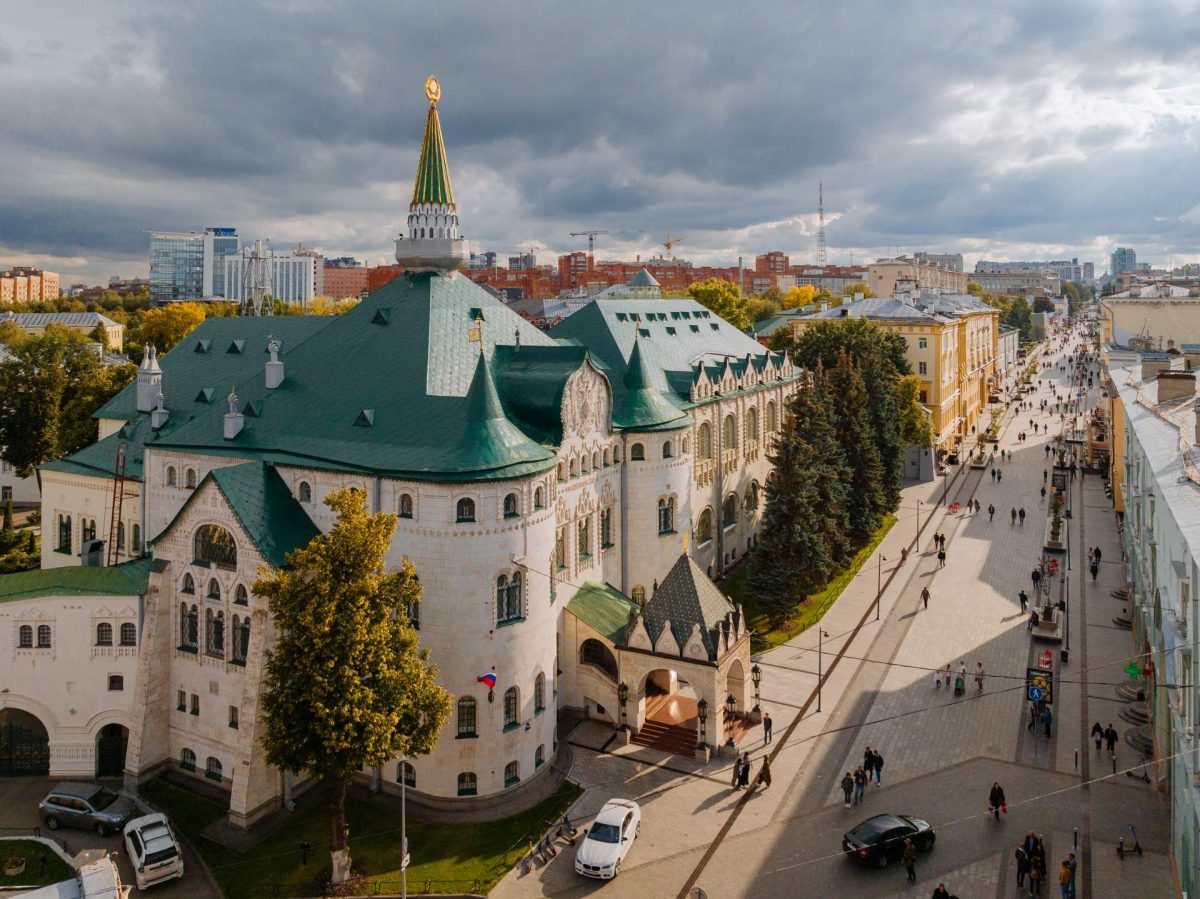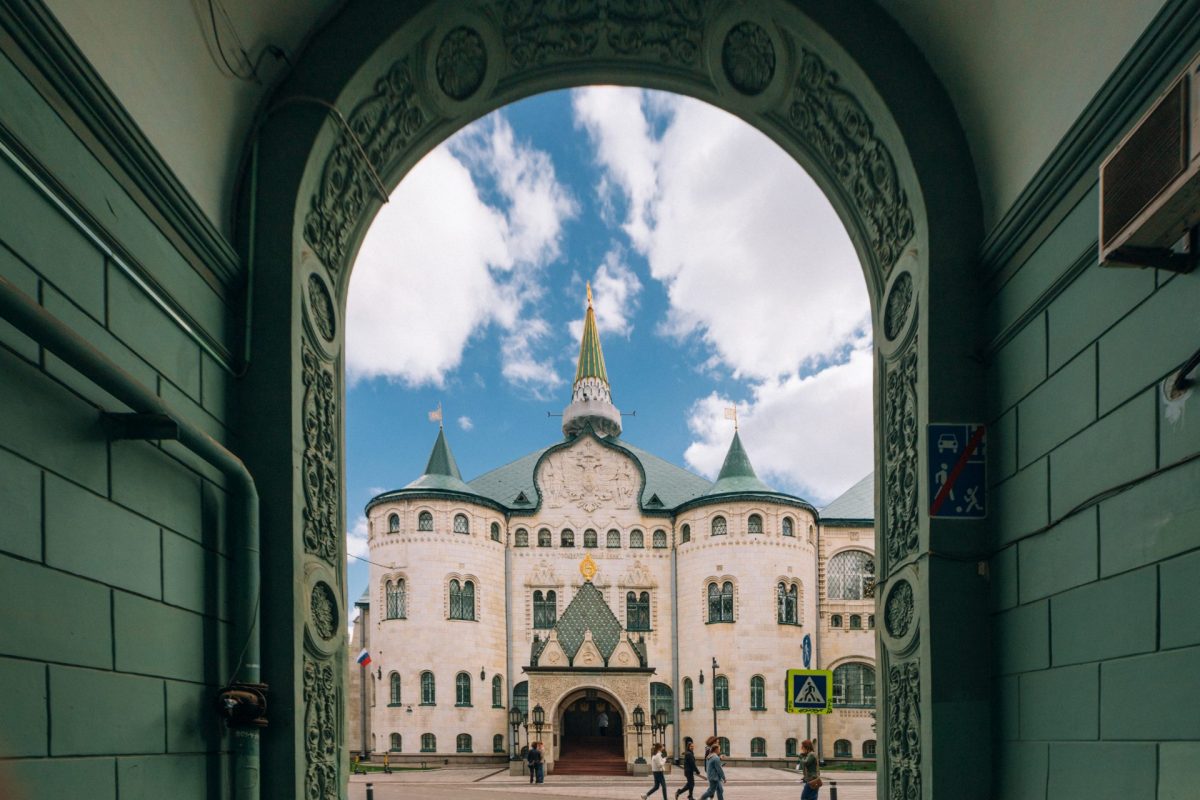Nizhny Novgorod is the cultural capital of Russia for 2024. Here, historical monuments coexist with art installations, Russian cuisine restaurants with gastro bars, and there’s even a Telegram bot designed for sunset viewing.
On profound Nizhny
The main attraction here remains the Nizhny Novgorod Kremlin, with its fascinating 500-year history. A walking path stretches over 2 km along its fortress walls: it’s the only Kremlin in Russia that you can fully walk around in a circle. Moreover, the walk requires significant effort, with an elevation change equivalent to that of nearly a 30-story building! In addition to the walls, towers previously inaccessible to visitors have been restored for the anniversary. Along with the four previously open towers (Dmitriyevskaya, Nikolskaya, Ivanovskaya, and Zachatyevskaya), three more (Taynitskaya, Chasovaya, and Borisoglebskaya) have been added. In general, it’s best to set aside at least half a day for a visit to the Kremlin. In addition to historical and local history exhibitions in the towers, the territory also houses the Center for Contemporary Art “Arsenal” and the Art Museum, which boasts a large collection of Russian paintings, with a particularly fascinating collection of avant-garde art.

One of the most notable symbols of the city’s transformation is the famous Strelka, the confluence of the Oka and Volga rivers. Once, a cargo river port was located on its promontory — a restricted area that was closed off not only to tourists but also to the city’s own residents. In 2017, in anticipation of the World Cup, the area was cleared and renovated. An amphitheater with glowing “Strelka” letters was built, and where the concrete warehouses once stood, an art park with pathways was created, transforming it into an open public space and a new cultural center for the city. Here, you’ll find the packhouses that have miraculously survived since the 19th century. They have been carefully integrated with exhibition and concert pavilions — now, the space regularly hosts concerts and festivals, as well as open-air exhibitions.
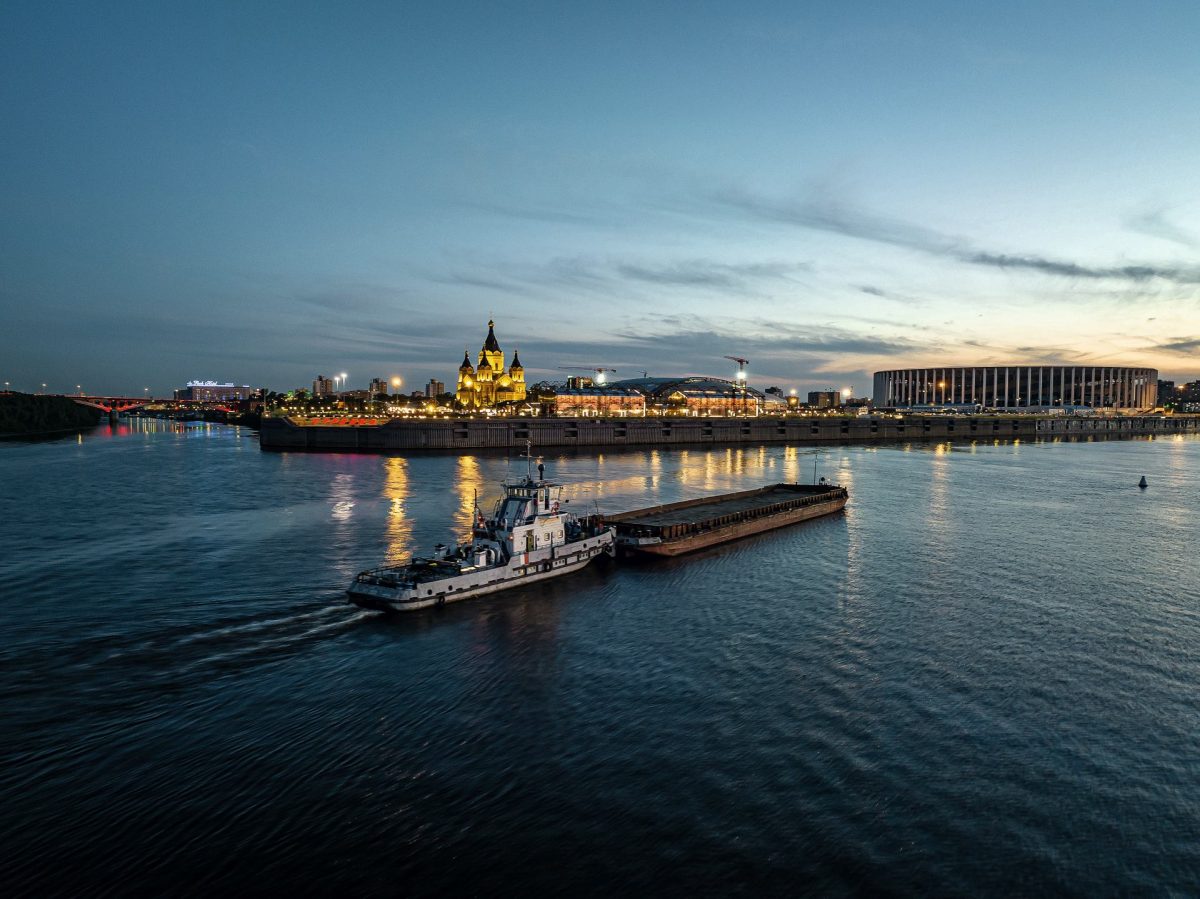
The Nizhny Novgorod Fair has also been revitalized. Originally located near the Makaryev Monastery, it was destroyed by a fire in 1816. For this reason, Emperor Alexander I even postponed the construction of the Winter Palace and redirected the funds to create the “great fair” in Nizhny Novgorod! However, the fair began to lose its status as the country’s largest trading center during the Soviet era, particularly during the NEP (New Economic Policy) period. Today, the old complex includes the Main Fair House, the Spassky Old Fair Cathedral, the Alexander Nevsky Cathedral, and the former manufactory warehouses. Now, it houses a modern expo center that hosts specialized exhibitions and federal conferences, public celebrations, and business presentations.
Go into the sunset
Nizhny Novgorod is easy to explore on foot, by bicycle, or by car, whether you’re venturing out on your own, with friends, or with a guide — there are no weak links in any itinerary, as the city is simply captivating. For tourists’ convenience, several themed routes have been created. One route, nearly 15 km long, takes you along the most beautiful embankments. Another route, which runs along the pedestrianized Bolshaya Pokrovskaya and nearby streets, connects historic wooden houses, mansions, and estates in the city’s historical center, many of which are cultural heritage sites. Finally, there’s a “Gastronomic Nizhny” tour: the city boasts over 2,000 establishments offering traditional Russian cuisine, international dishes, and modern street food with inventive gastro bars. Adding your own activities to the tour is not only allowed but encouraged. The most Russian-style restaurant is Pyatkin, where the menu features dishes like “Nizhny Novgorod-style brawn with mushrooms and chicken,” “mushrooms in barrels with lean oil and dill,” “Volga-style fish soup on a rooster broth made properly with pike, catfish, vodka, and lingonberries, served with open pies,” and “lake crucian carp fried to a crisp with mushroom broth and potatoes in a skillet” — all complemented by the restaurant’s signature tinctures. The solid restaurant Mitrich specializes in steaks from Voronezh marble beef. While in 19, the new location in Nizhny Novgorod, dishes made from local ingredients are cooked over an open flame using 19th-century recipes. The chef discovered a collection of local recipes published in 1898 in the city library archives. He used it as a foundation and reinterpreted the recipes in his own style. The team excels in making pies with various fillings, oven-baked soups, and pork loin and ribs from the Hungarian Mangalica breed of marble pork.
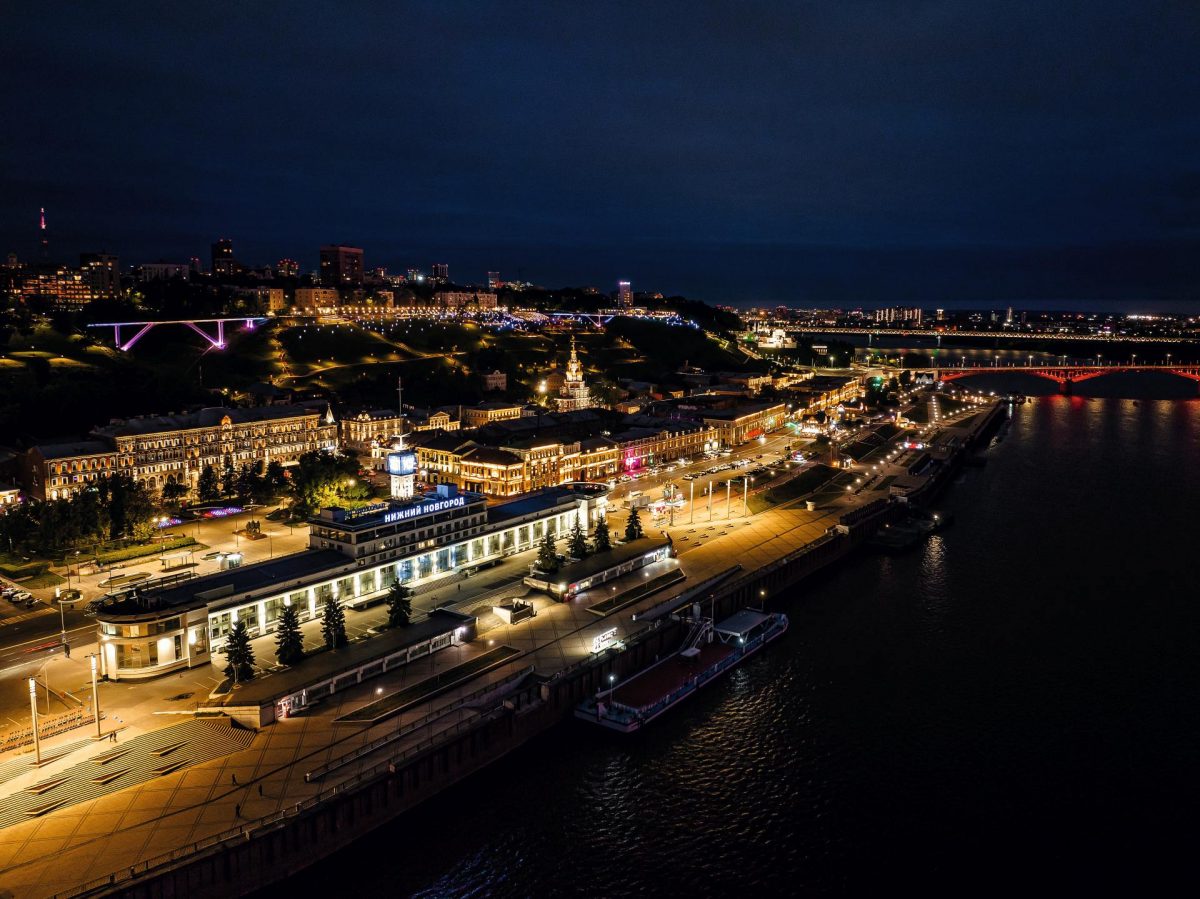
But it’s not all about traditions — Nizhny Novgorod, which was the youth capital of Russia last year, is, more than any other city, young at heart and soul. For example, it is a prominent hub of street art in our country. Since 2017, the annual street art festival Mesto has been held here, after which new works by Russian and international “spray can and stencil” artists appear on walls and facades. And one more thing. Due to Nizhny Novgorod’s location on the high banks of the Oka and Volga rivers, with its historical center facing northwest, the city is often referred to as Russia’s “capital of sunsets.” Local tourism authorities have even developed a handy “Sunset Map” and a Telegram chatbot. The walls of the Nizhny Novgorod Kremlin, the embankments, Chkalov Staircase, Strelka, the cable car over the Volga, bridges, and parks — everyone can find their own favorite spot to watch the sunset.
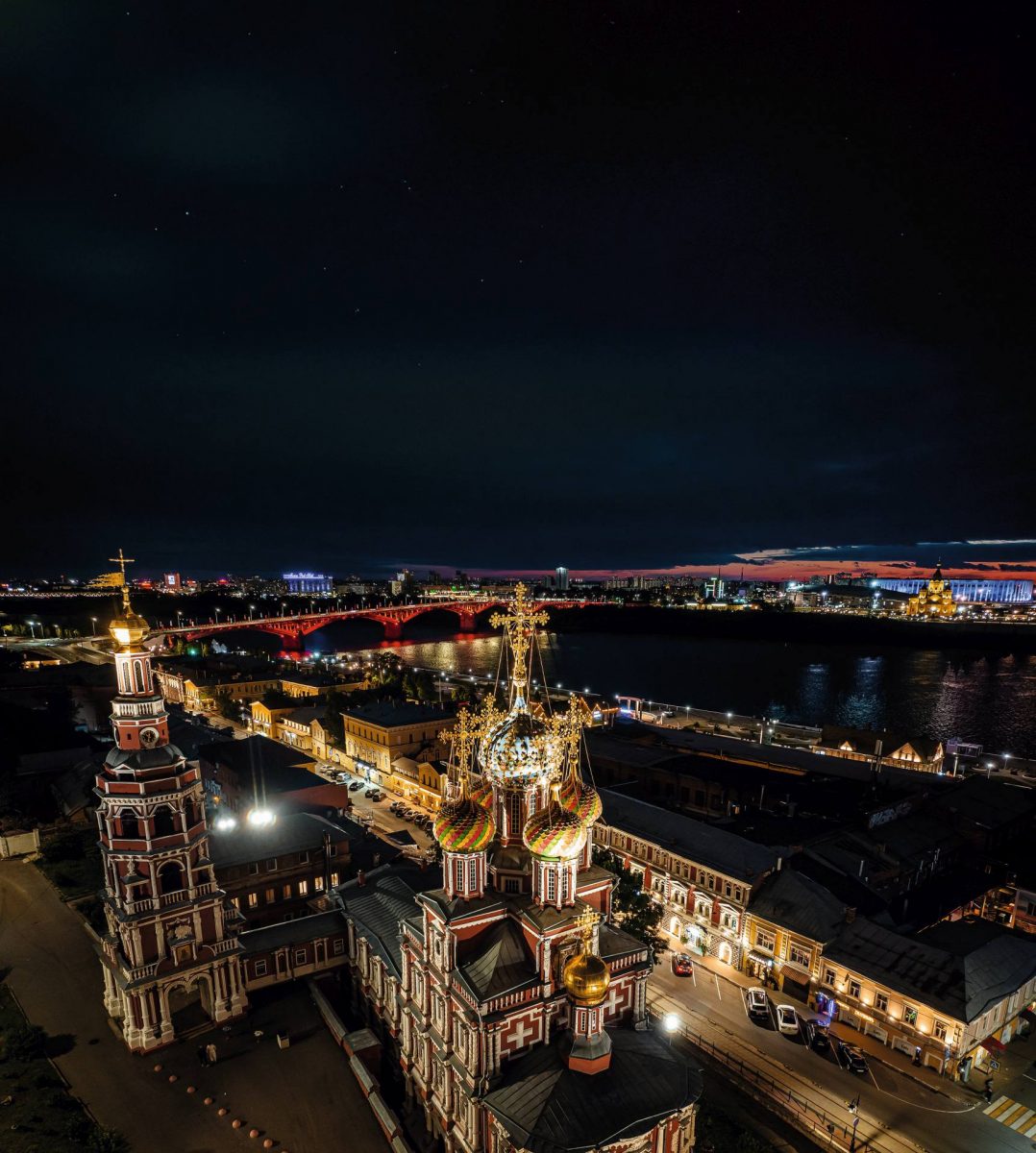
What else to see
In Russia, there are fewer than fifty settlements with the status of “historical,” and Arzamas, founded during the reign of Ivan the Terrible (about a 2-hour drive from Nizhny Novgorod), is one of them. It’s hard to fathom how such a compact area houses so many monumental churches. And here is its most “star-studded” attraction — Cathedral Square. It is named after the Resurrection Cathedral, which was built to commemorate the victory over Napoleon. Another compelling reason to visit Arzamas is its local goose, a culinary symbol of the city: they even have a bronze statue dedicated to this bird. In the time of Catherine the Great, geese were driven to St. Petersburg “on foot” — their feet were dipped in tar to prevent them from wearing out on the journey!
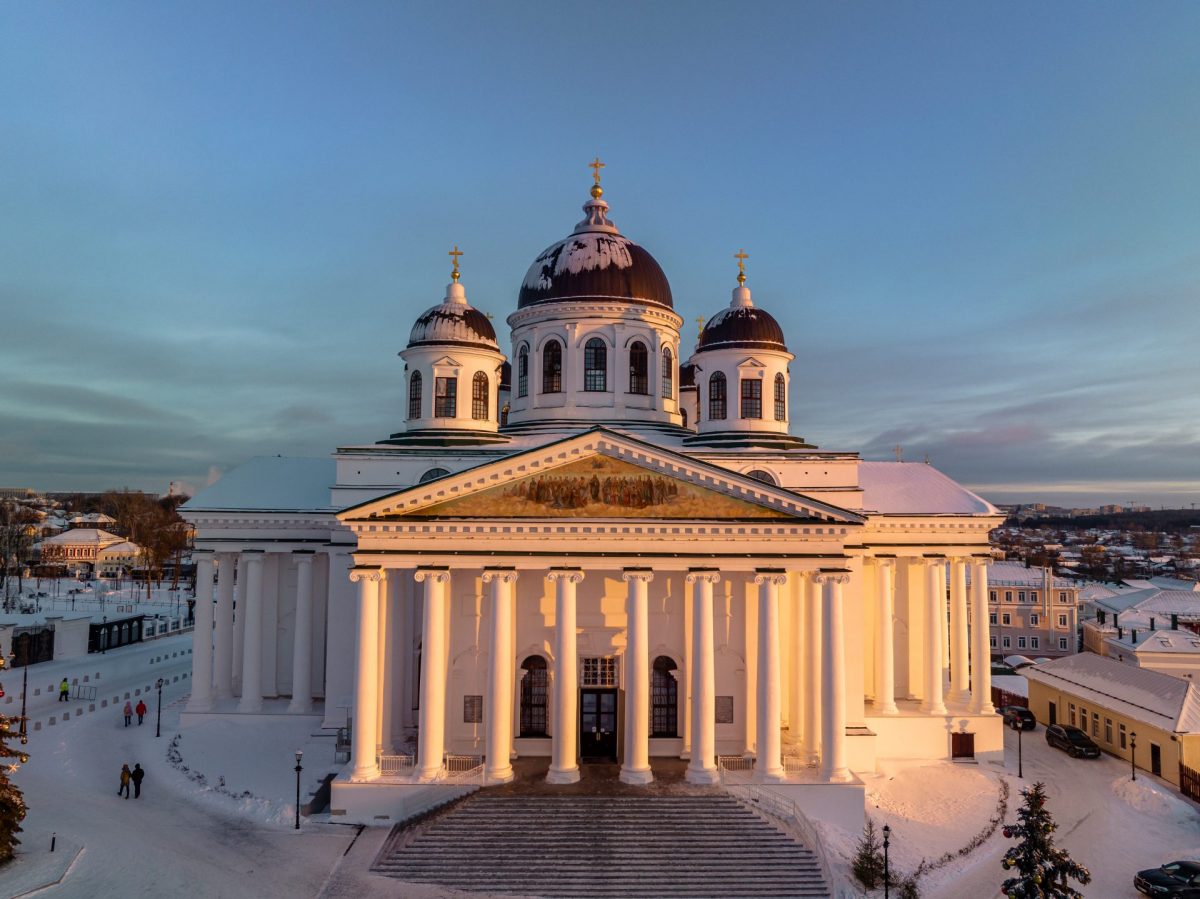
Photo: Nizhny 800
